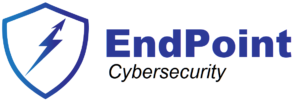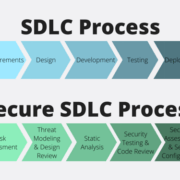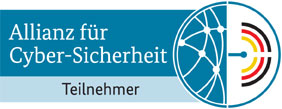Securing the Secure: The Importance of Secure Software Practices in Security Software Development
In an increasingly interconnected digital world, the importance of secure software cannot be overstated.
Many people think that by using security software all their digital assets become automatically secured.
However, it is crucial to recognize that security software itself is not inherently secure by default.
To ensure the highest level of protection, security software must be designed, developed, and maintained using secure software practices.
This blog post emphasizes how important it is to incorporate secure software development practices within the broader context of the secure software lifecycle for security software.
Understanding the Secure Software Lifecycle
The secure software lifecycle encompasses the entire journey of a security software product, from its inception to its retirement.
It consists of multiple stages, such as :
- Requirements gathering/Analysis
- Design,
- Implementation
- Testing,
- Deployment
- Maintenance
- Retirement
Incorporating secure software practices at each step is essential to fortify the software’s defense against potential vulnerabilities and attacks.
Implement Secure Software Development Practices
Implementing secure software practices involves adopting a proactive approach to identify and address security concerns from the outset.
Some fundamental practices include:
a. Threat Modeling:
Conducting a comprehensive analysis of potential threats and vulnerabilities helps developers design robust security measures. By understanding potential risks, developers can prioritize security features and allocate resources accordingly.
b. Secure Coding:
Writing code with a security-first mindset minimizes the likelihood of exploitable vulnerabilities. Adhering to coding standards, utilizing secure coding libraries, and performing regular code reviews and audits contribute to building a solid foundation for secure software.
c. Secure Configuration Management
Properly configuring the security software environment, such as secure network settings, encryption protocols, and access controls, is vital for safeguarding against unauthorized access and data breaches.
d. Regular Security Testing
Rigorous testing, including vulnerability assessments, penetration testing, and code analysis, helps identify and rectify security flaws. It ensures that security software operates as intended and remains resilient against evolving threats.
The Bigger Picture: Security in a Connected World
Secure software development practices extend beyond the development of security software alone. They have a broader impact on the overall security ecosystem. The adoption of secure software practices sets a precedent for other software developers, promoting a culture of security awareness and accountability.
Moreover, incorporating secure practices in security software helps foster trust among users and organizations. It instills confidence that the software is diligently designed to protect sensitive information and critical systems. Secure software practices also contribute to regulatory compliance, enabling organizations to meet stringent security standards and safeguard user data.
The Vital Importance of Secure Software: Consequences of Security Vulnerabilities for Security Companies
The implications of security vulnerabilities go beyond the immediate risks they pose to users and organizations. For security companies, the consequences of having products with security vulnerabilities can be severe, impacting their reputation, customer trust, and overall business viability.
Here are just a few negative consequences that security companies may face if their products fall prey to security vulnerabilities:
- Reputation Damage: Security companies are built on trust and reliability. When a security product is discovered to have vulnerabilities, it erodes customer confidence and tarnishes the company’s reputation. The perception that a security company cannot protect its own software casts doubt on its ability to safeguard sensitive information and defend against external threats. This loss of trust can be challenging to regain, resulting in a significant blow to the company’s credibility and market standing.
- Customer Loss and Dissatisfaction: Security vulnerabilities in software can lead to compromised systems, data breaches, and financial losses for users. In such instances, customers are likely to seek alternative security solutions, abandoning the vulnerable product and the company behind it. This loss of customers not only affects the company’s revenue but also demonstrates a lack of customer satisfaction and loyalty. Negative word-of-mouth can spread rapidly, deterring potential customers from considering the security company’s offerings in the future.
- Legal and Regulatory Consequences: Security vulnerabilities can have legal and regulatory implications for security companies. Depending on the nature and severity of the vulnerabilities, companies may face legal action from affected parties, resulting in costly litigation and potential financial penalties. Furthermore, security companies operating in regulated industries, such as finance or healthcare, may face compliance violations, leading to fines and reputational damage. Compliance with security standards and industry regulations is critical for security companies to maintain credibility and avoid legal consequences.
- Increased Operational Costs: Addressing security vulnerabilities requires significant resources, both in terms of time and finances. Security companies must invest in dedicated teams to investigate, fix, and release patches or updates to address vulnerabilities promptly. Additionally, engaging in incident response, customer support, and post-incident communication efforts adds to the operational costs. Failure to address vulnerabilities in a timely and efficient manner can exacerbate the negative consequences, making the recovery process more challenging and expensive.
In an era where security breaches and cyber threats are prevalent, relying solely on the notion that security software is inherently secure is a grave misconception. Secure software practices are indispensable for developing robust and resilient security software. By implementing these practices throughout the software lifecycle, developers can significantly mitigate the risks associated with vulnerabilities and ensure the highest level of protection for users and organizations alike. Embracing secure software practices sets the stage for a safer digital landscape, bolstering trust, and reinforcing security across the entire software development ecosystem. By prioritizing security, security companies can protect their customers, preserve their reputation, and maintain a competitive edge in the ever-evolving landscape of cybersecurity.
If you want to know more about SSDLC, contact Endpoint Cybersecurity for a free consultation.
The post Securing the Secure: The Importance of Secure Software Practices in Security Software Development first appeared on Sorin Mustaca on Cybersecurity.





